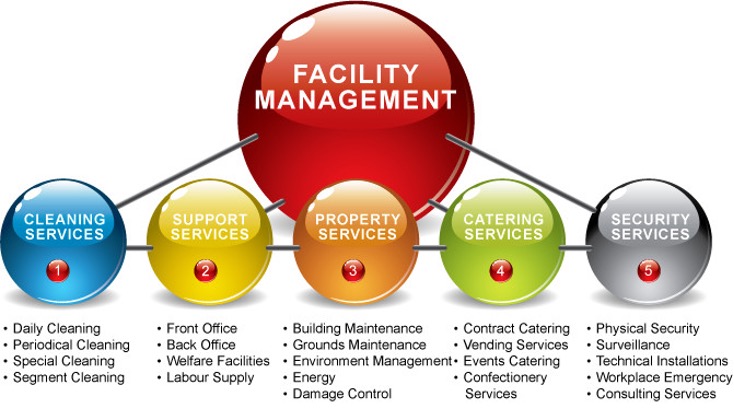To create a secure and beneficial learning environment, effective management of school infrastructure is essential. The complexity of operating a school campus, from upkeep and asset monitoring to room bookings and security administration, may be intimidating.
But now that facilities management software is available, schools may reorganize their procedures, boost productivity, and better manage their facilities as a whole. In this essay, we examine the advantages and revolutionary potential of school facilities management software.
Features of Facilities Management Software for Schools
- Asset management: The program enables educational institutions to keep track of and manage their physical assets, such as furniture, tools, and technology. It helps educational institutions to keep an inventory of their resources, monitor their whereabouts and conditions, plan for maintenance and repairs, and produce reports on resource consumption.
- Work Order Management: Schools can create and manage work orders for upkeep, repairs, and facility-related requirements using facilities management software. It offers a centralized platform where work orders can be submitted, tracked, and prioritized. Tasks may then be given to employees or contractors, and their progress can be tracked.
- Maintenance Plans: The software makes it easier to establish maintenance plans for educational institutions. It enables educational institutions to plan out routine maintenance activities like cleaning, equipment servicing, and inspections, ensuring that facilities are kept in good condition and lowering the likelihood of unplanned failures or repairs.
- Reservation and Scheduling of Rooms: School facilities such as classrooms, auditoriums, and sports facilities may be managed and scheduled using functions provided by facilities management software. Staff and instructors can use it to make reservations, check on availability, and handle scheduling difficulties. This function guarantees the effective use of educational facilities and removes schedule problems.
- Energy Management: To assist schools in tracking and maximizing their use of energy, facilities management software incorporates energy management functions. It enables educational institutions to monitor energy use, set energy goals, pinpoint regions with high energy use, and put energy-saving strategies into action. This function lowers energy expenses for schools and promotes sustainability.
- Management of Safety and Compliance: The program helps schools keep track of safety procedures and compliance standards. It enables educational institutions to record safety processes, carry out inspections, monitor adherence to rules, and provide reports for audits or inspections. This function guarantees a secure and legal environment for guests, staff, and students.
Benefits of Facilities Management Software for Schools
- Enhanced Efficiency: Tasks are automated and streamlined using facilities management software, resulting in less human labor and paperwork. This increases operational effectiveness, allowing schools to concentrate more on important pedagogical tasks.
- Centralized Management: The program offers a platform for the management of all facets of facility operations, such as upkeep, asset monitoring, room bookings, and security. This streamlines procedure and guarantees uniform and well-coordinated administration throughout the institution.
- Better Task Scheduling and Tracking: Facilities management software facilitates proactive maintenance through task scheduling and tracking. Schools can simply keep track of the progress of repairs, the history of maintenance, and the prompt resolution of facility problems.
- Cost savings: By putting preventative maintenance procedures in place, schools may lower the likelihood that expensive repairs and equipment failures will occur. Software for facilities management aids in cost tracking, data-driven decision-making, and schedule optimization for effective cost control.
- Asset monitoring and inventory management: The program enables precise asset tracking and inventory management for educational institutions. To ensure that assets are used to their full potential and to avoid theft or loss, schools may keep an eye on their location, state, and maintenance history.
- Effective space management: Classrooms, labs, and common areas may all be effectively managed by schools thanks to facilities management software. Schools can allocate space efficiently, prevent disputes, and make wise judgments about facility development or use.
- Security: The program facilitates effective administration of safety and security, including visitor management, access control, and emergency response planning. Schools may collect visitor information, develop emergency plans, and monitor and regulate access to buildings to keep children and employees safe.
Disadvantages of Facilities Management Software for Schools

- Investment upfront: Investing upfront in software licensing, hardware, training, and system integration is necessary for the implementation of facilities management software. For schools with tight financial restrictions, this may be a problem.
- Learning curve: Employees may need training and some time to become used to the program, especially those who aren’t familiar with it. Productivity may suffer briefly as a result of the transition.
- Technical problems: Reliable hardware and consistent internet access are requirements for facilities management software. Technical difficulties that impair system operation and demand technical help might include software bugs, network issues, or compatibility concerns.
- Limitations on Customization: Some facilities management software solutions might not perfectly match the special requirements and work processes of particular institutions. Schools may have to modify their procedures to meet the capabilities of the program because customization choices may be restricted.
- Data security and privacy: Sensitive data about school buildings, assets, and security is stored in facilities management software. Schools must make sure that the necessary data security measures are in place to guard against unauthorized access or breaches of private data.
Conclusion
Schools may operate their facilities more efficiently, better allocate their resources, and provide employees and students with a clean, safe environment by implementing facilities management software. It improves productivity, lowers expenses, and allows proactive facilities management, which ultimately improves the learning environment.
